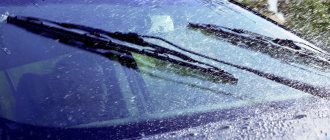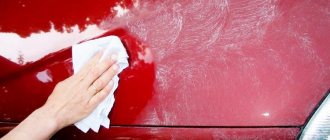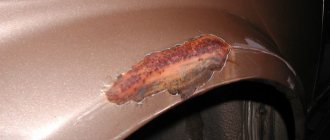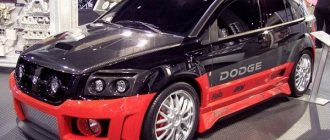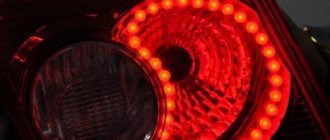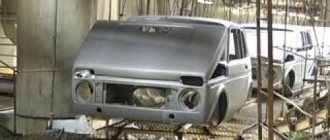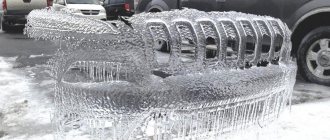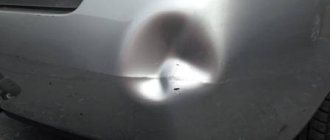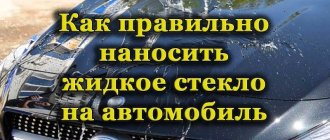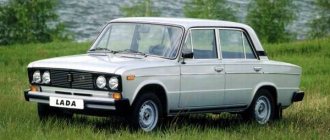Every driver tries to ensure maximum comfort while driving, as well as minimize the time and financial costs of car maintenance. Difficult weather conditions, especially in spring and autumn, and the operation of a car on “domestic” road surfaces are accompanied by rapid contamination of the windows and car body. Driving during rain or wet snow has a significant impact not only on comfort, but also on traffic safety, since driving in such conditions is accompanied by a decrease in visibility due to water droplets on the windows and their rapid contamination. In such conditions, it is necessary to protect car windows using an anti-rain system.
Standard glass cleaning equipment
To clean glass, cars already have windshield wipers, but during operation, their efficiency decreases due to the appearance of scratches and microcracks on the glass, which may not even be visible without special equipment. These defects make the glass rough, which prevents water droplets from flowing off it. In addition, car wipers have a short service life and their performance decreases over time.
Car windshield wipers
It is also worth noting that windshield wipers do not clean all glass, especially since they are intended only for the windshield. The side windows are not cleaned at all, and the rear window - even with a wiper - has a small cleaning area.
Advantages of a hydrophobic coating for a car
Even during the most careful driving of a car, small cracks form on the surface of the windshield, which contribute to rapid contamination of the surface and prevent the rapid removal of sediment. Even the wipers are unable to cope with them. Therefore, more and more often, motorists use special water-repellent coatings - “anti-rain” products.
The material provides a protective, durable layer on the vehicle that fills small cracks and creates a smooth surface that prevents dirt and water from settling. It also protects the glass from negative influences. What is noteworthy is that at high car speeds - from 70 km per hour, snow and raindrops leave the glass even without the help of wipers.
Information! Despite the fact that different types of polishes are used for processing metal and glass, they contain absolutely identical components, which create a hydrophobic layer.
Anti-rain for glasses
There are special means for protecting car windows; in addition, you can make an anti-rain protection system yourself. Such tools will make life much easier for any driver. Special compositions for glass processing have good water-repellent properties; they are popularly called “anti-rain for glass.” According to the manufacturers, after applying the product to the glass, it creates a thin transparent layer with hydrophobic properties. This layer prevents water droplets from being retained on the glass, and also helps the wipers and the oncoming air flow to more easily and quickly remove water from the surface of the glass. When applied to glass, anti-rain fills all scratches, creating the smoothest surface, and there is nothing for water drops to catch on, and the hydrophobic substances included in the composition repel water, reducing the area of interaction of water drops with the surface of the glass, which also contributes to the rapid drainage of water.
Comparison of the surface of glass treated with anti-rain and not treated with it
The modern market offers many water-repellent compounds from various manufacturers and price ranges. Almost all chemical compositions of anti-rain include silicone polymers and a solvent; the composition may also include a fixative, which ensures the wear resistance of the composition. The protective layer on the glass after applying the composition can last up to six months.
Advantages of applying anti-rain to car windows:
- Improved visibility during rain and sleet;
- When driving at a speed of more than 60 km/h, the wipers can be turned off - they will not be needed;
- Convenience of washing glass; stains from midges, frost, etc. can be easily removed from them;
- Extending the service life of wipers;
- Reduced anti-freeze consumption;
- Reducing the glare of headlights from oncoming cars.
If we talk about the disadvantages of anti-rain, we can note the following:
- Some inexpensive products have a strong, unpleasant odor
- Cheap products have a short-term effect: from several days to a couple of weeks (or until the first wash).
Processed surfaces
Quite a lot of controversy and conversation unfolds regarding what exactly can be treated with anti-rain products.
If we talk about theory, then such substances are suitable for working with a wide variety of surfaces, including the body, glass, plastic, etc. But it is unlikely that a motorist will want to treat the entire car. Especially when purchasing professional products, which cost several hundred rubles for literally a few tens of grams of product.
The most common application is the windshield. Many more treat side and rear windows and apply products to exterior rear view mirrors. All this allows you to increase the level of visibility of the road ahead, the situation behind and on the sides of the vehicle.
As for the body, expensive professional anti-rain products are rarely treated with such means. The surfaces are large, but the product in the bottle is small. This is not economically feasible. Plus, we must not forget that for the body there are a huge number of polishes and other products that provide almost the same effect.
If you often drive in heavy rain or snow, it is better to use anti-rain to treat:
- Windshield;
- rear window;
- front side windows;
- side mirrors;
- head optics in front.
We must not forget about specific recommendations for use for each individual anti-rain product. In the instructions, the manufacturer indicates how and for what their drug can be used. These recommendations cannot be violated, since some substances can ruin the paintwork, destroy plastic, and cause wear of rubber bands and various seals. But they can’t do anything to glass.
Other products are universal, suitable for creating an anti-rain effect on any surface.
Each manufacturer has its own instructions for use. You need to strictly follow these recommendations, even if you have experience with other similar anti-rain products. First read the original instructions, and only then proceed with applying the product.
Anti-rain for the body
There is also anti-rain for the car body. Although the presence of drops of water and dirt on the body does not affect traffic safety, it does spoil its appearance. By its principle, anti-rain for the body performs the same functions as for glass, but has a different chemical composition.
Comparison of a car body before and after anti-rain treatment
This is due to the fact that the glass cleaner contains a solvent, which has a negative effect on the paintwork of the car. In addition to silicone polymers, anti-rain for the body contains wax and a solvent that does not harm the paintwork.
Silicone grease as an anti-rain
Buying a branded product will cost a pretty penny, and its effectiveness is unknown. After carefully studying the chemical composition of the product, you can make it yourself. The main element of the product is silicone polymer. In car dealerships you can find a product for eliminating squeaks in the car interior - liquid silicone in the form of a spray. When studying the composition of the substance, you can find that it contains the same silicone polymers. The spray is much cheaper than anti-rain. The product is suitable for application to car windows, the effect will be the same as after using anti-rain. The disadvantages of choosing a product are:
- short service life due to the absence of a fixative in the spray;
- The product is not recommended for use on car bodies.
Silicone spray lubricant is applied to the glass and thoroughly rubbed into it
The product does not have cleaning properties, so the glass must be thoroughly washed and dried before spraying the spray. After spraying, the composition is thoroughly rubbed into the surface of the glass with a sponge, napkins or cotton pads. Subsequently, the glass is polished until completely transparent using cloth, paper or napkins.
Application technique
Now it’s actually worth giving an algorithm according to which you should use purchased anti-rain for car glass. However, this applies to any means, including those products that are prepared by the vehicle owners themselves. When using certified products, you must comply with their shelf life, which is indicated in the instructions for the drug. There will also be recommendations on how exactly it should be applied.
The algorithm itself for how to properly apply anti-rain on glass:
- First you need to wash the surface from all contaminants.
- Wipe the surface to be treated dry.
- Spray the product over the entire surface (if you choose a spray can) or first apply it to a rag (preferably microfiber).
- The applied composition is rubbed in with medium force (do not overdo it), distributing it over the entire area.
- The product itself should be applied in two layers with an intermediate drying period.
- At the final stage, polishing is carried out to improve transparency using soft felt.
For the procedure, you should choose a day when the weather outside is dry with temperatures ranging from 5-25 °C. You should also avoid direct sunlight, so put the car in the shade in advance or carry out the procedure in a garage (if you have one).
To protect the skin of your hands, you should wear rubber gloves. True, when using protective preparations for car windows prepared by yourself, you can do without them. Although it is more convenient for anyone. After treating the glass, it is better to immediately apply the composition to the headlights and mirrors.
Anti-rain from paraffin and white spirit
For the most economical ones, you can use a composition that is suitable for processing both glass and car body. Making the composition with your own hands is not difficult and does not require large expenses. To prepare anti-rain you will need only 2 components - paraffin and White Spirit solvent. These ingredients are cheap and easy to find. The paraffin in the mixture is intended to create a hydrophobic layer. A paraffin candle or liquid paraffin - a liquid for igniting a barbecue - is suitable for the composition.
In the case of a paraffin candle, to prepare the solution it must be crushed to speed up the dissolution process. To do this, you can use a kitchen grater, meat grinder or knife. The prepared paraffin shavings must be filled with White Spirit. When dissolving, it is important to maintain the proportion - 1:20. To one part paraffin there are 20 parts solvent. After complete dissolution of the paraffin, the composition is ready for use.
Anti-rain from paraffin and white spirit
After preparation, homemade anti-rain must be applied to an absolutely clean surface of the glass and, if desired, the car body, which must first be washed with car shampoo and detergent with ammonia. Afterwards, the surface of the glass should be rubbed with napkins until it is perfectly transparent.
Anti-rain can be applied only after the surface has completely dried. For application, it is better to use a soft sponge, cloth, cotton pads or napkins. After applying the mixture, you need to give time for the solvent to evaporate. Then the surface is polished with paper napkins.
Applying anti-rain from paraffin and white spirit to a car
The composition is quite simple to prepare and does its job well. The disadvantage can be considered the relative fragility of applying the composition - about 2 months, and possibly less, depending on the intensity of rain and the number of car washes.
You should not use other solvents instead of White Spirit , as they have a negative effect on the paintwork elements of the car body.
You can watch the video for more details about the process of making and applying such anti-rain:
comparison table
In order to compare the presented products, we recommend taking a look at their characteristics in the table below.
| Means | Country of Origin | Operating temperature (C°) | Type | Weight (ml) | Cost, rub) |
| NANOPROTECH 0115 | Russia | from +15 to +25 | napkins | 470 g | from 170 to 212 |
| Soft99 Ultra Glaco, 04146 | Japan | no higher than +40 | sponge, liquid | 70 | from 959 to 960 |
| Bullsone Repellent Speed Spray | South Korea | information is absent | aerosol | 380 | from 1100 to 1300 |
| Soft99 Glaco Roll On Large 04107 | Japan | no higher than +40 | liquid, sponge | 120 | from 1100 to 1250 |
| Bullsone Clean&Rain Repellent 2 in1 | South Korea | no information | spray | 500 | from 297 to 400 |
| Aquapel Glass Treatment | USA | from + 10 to + 50 | sponge | 80 | from 390 to 460 |
| KERRY KR-293 | Russia | information is absent | spray liquid | 250 | from 254 to 300 |
| Turtle WAX 7704 | Great Britain | +3 to +25 | liquid | 300 | from 450 to 680 |
Anti-corrosion water-repellent grease WD - 40
A number of useful properties of WD-40 lubricant have been known for a long time, the main of which are:
- displacement of moisture;
- protection from moisture and prevention of corrosion;
- cleaning the surface from glue, grease and bitumen stains;
- lubrication of metal parts.
The main elements included in the chemical composition of WD - 40:
- White spirit solvent;
- ferromones;
- carbon dioxide required for atomization.
WD-40 can also be used as an anti-rain for glass and bodywork
This chemical composition and the objectives of WD-40 predetermined its use as an anti-rain. The aerosol can be used both for glass and for the car body. The process of applying it is similar to the case with paraffin anti-rain. Surfaces must be washed, degreased and dried before application. After application to the surface, the aerosol is thoroughly rubbed in and the treated surfaces are polished. The disadvantage of using the product is its relative fragility.
Brief description of the product
Anti-rain is made from silicone and organic solvent. After application to glass and car body, this composition forms a thin hydrophobic film that reliably protects surfaces from moisture and dirt. Water does not linger on the treated surface and immediately rolls down, improving the visibility of the windshield and the appearance of the car.
Advantages of anti-rain:
- prevents vehicle pollution;
- makes it easier to clean windows and bodywork from water and dirt;
- does not leave streaks or cloudy film;
- reduces the adhesion of snow and ice to the car surface;
- reduces washer fluid consumption;
- When driving at a speed of 40 km/h, it reduces the intensity of wiper use.
We recommend: Self-installation of car alarms, car alarm connection points
The cost of branded anti-rain starts from 500 rubles. You can also find cheaper analogues in car shops, but their effect will be questionable and not durable enough (the car will have to be treated after every rain).
Supercon as anti-rain
Superconcentrate can be purchased at any hardware store. Craftsmen suggest diluting a measuring cap of this product with 2 - 3 liters of water and simply pouring it into the windshield washer reservoir. The effect will be “obvious” - water will roll off the surface of the glass even without turning on the windshield wipers. The advantage of the method is the ease of preparing the mixture.
Do-it-yourself anti-rain based on Lenora
